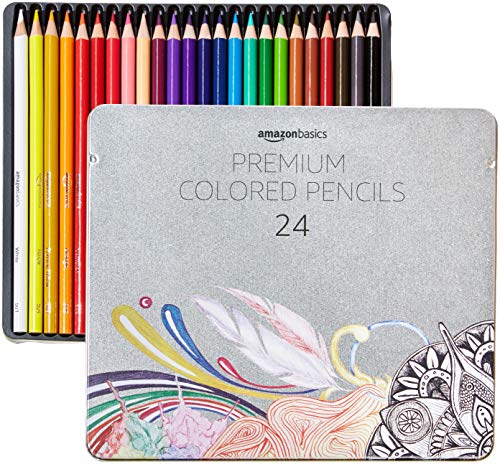The Importance of Art and Engaging in Art for a Child’s Development
Art is more than just a creative pastime; it’s a powerful tool that shapes a child’s development in profound ways. From painting and drawing to music and theater, engaging in artistic activities fosters cognitive, emotional, and social growth, equipping children with skills that benefit them throughout their lives. This article explores why art is essential for children and how active participation in creative pursuits supports their holistic development.
Cognitive Development Through Art
Art stimulates a child’s brain in ways that enhance critical thinking, problem-solving, and imagination. When children engage in activities like drawing or sculpting, they learn to observe, interpret, and make decisions. For instance, choosing colors or shapes requires them to analyze options and predict outcomes, strengthening their decision-making skills. According to research from the National Endowment for the Arts, children involved in arts education show improved academic performance, particularly in areas like math and reading, due to enhanced cognitive flexibility.
Creating art also boosts a child’s ability to think abstractly. When a child paints a picture of their family or composes a simple song, they translate emotions and ideas into tangible forms, fostering creativity and innovation. These skills are invaluable in a world that increasingly values out-of-the-box thinking. Moreover, art encourages focus and patience—whether it’s mastering a new dance move or perfecting a sketch, children learn the value of persistence and attention to detail.
Emotional Expression and Well-Being
Art provides a safe space for children to express emotions they might struggle to articulate verbally. A child who paints a stormy sea might be processing feelings of anger or sadness, while a cheerful dance performance could reflect joy. This emotional outlet is critical for mental health, helping children manage stress and build resilience. Studies, such as those from the American Art Therapy Association, show that art-making reduces cortisol levels, promoting relaxation and emotional regulation.
Engaging in art also builds self-esteem. When a child completes a project—be it a clay sculpture or a role in a school play—they experience a sense of accomplishment. This boosts confidence and encourages them to take on new challenges. For children who may feel marginalized or struggle academically, art offers a non-judgmental space to shine, reinforcing their sense of identity and worth.
Social Skills and Collaboration
Art often involves collaboration, whether it’s singing in a choir, acting in a play, or working on a group mural. These activities teach children how to communicate, share ideas, and respect others’ perspectives. For example, a theater production requires teamwork, compromise, and empathy as children work together to bring a story to life. These experiences build social skills that are essential for forming healthy relationships.
Art also exposes children to diverse cultures and perspectives. Learning about traditional dances, studying global art styles, or listening to music from different cultures broadens their worldview and fosters inclusivity. This cultural awareness helps children become empathetic, open-minded individuals who value diversity.
Motor Skills and Physical Development
For younger children, art activities like cutting, gluing, or playing an instrument refine fine motor skills. Holding a paintbrush or strumming a guitar strengthens hand-eye coordination and dexterity, which are crucial for tasks like writing or tying shoelaces. Dance and movement-based arts, such as ballet or creative movement classes, enhance gross motor skills, balance, and physical fitness. These activities make learning fun while supporting physical development.
Lifelong Benefits of Artistic Engagement
The skills children gain through art extend far beyond childhood. Creativity, problem-solving, and emotional intelligence are qualities that employers and communities value in adults. Engaging in art also fosters a lifelong appreciation for beauty and self-expression, enriching children’s lives as they grow. Whether they pursue art professionally or as a hobby, the ability to think creatively and navigate emotions will serve them in countless ways.
Encouraging Art in Children’s Lives
Parents and educators can nurture a child’s artistic development by providing access to diverse art forms and creating a supportive environment. This doesn’t require expensive supplies or formal classes—simple activities like drawing with crayons, singing songs, or storytelling at home can spark creativity. Schools should prioritize arts education, ensuring it’s not sidelined in favor of core subjects, as its benefits are integral to a well-rounded education. Community programs, museums, and local art classes can also provide opportunities for children to explore their creative potential.
Importantly, the focus should be on the process, not the product. Praising a child’s effort rather than the perfection of their artwork encourages them to experiment without fear of failure. Allowing children to explore art freely helps them discover their unique voice and builds confidence in their abilities.
Conclusion
Art is a cornerstone of a child’s development, nurturing their mind, emotions, and social skills while fostering creativity and resilience. By engaging in artistic activities, children learn to express themselves, collaborate with others, and navigate the world with confidence and curiosity. In a society that often prioritizes measurable outcomes, the immeasurable value of art lies in its ability to shape well-rounded, empathetic, and innovative individuals. Encouraging children to explore art is an investment in their future, unlocking a world of possibilities that will enrich their lives for years to come.




